Among all flowers, tulips are some of the most iconic. These blooms are a staple across the globe, and many countries grow them en masse each year. Let’s dive into 20 fun and amazing facts about tulips that even the most passionate flower lovers may not know about.
1. Different Tulip Colors Have Different Meanings
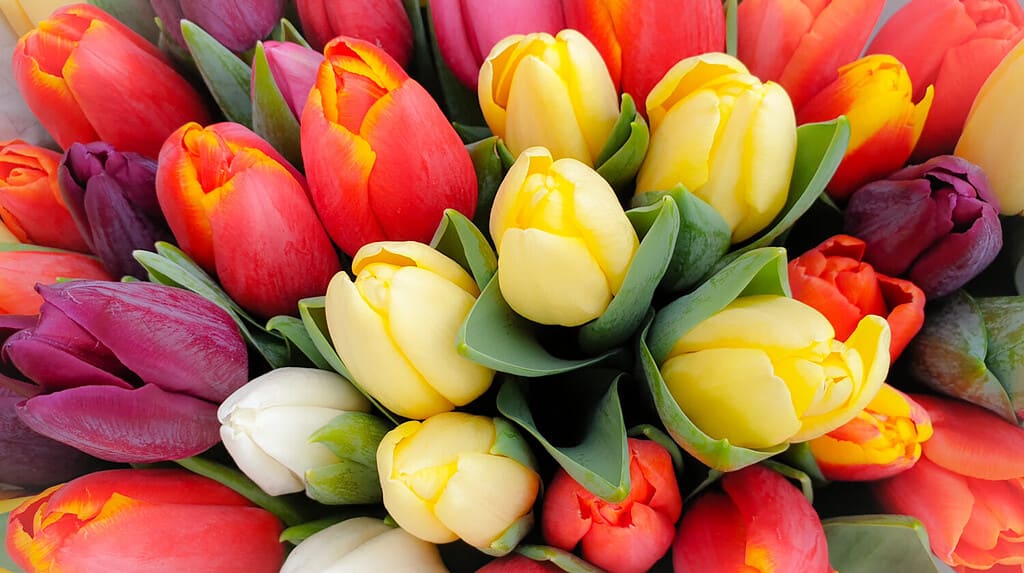
Tulips are one of the most popular flowers in America.
©Heynicepictures/Shutterstock.com
The significance of a tulip changes based on its color. For example, pink tulips are thought to represent innocence and joy, yellow tulips are said to represent happiness and inner peace, and many people give red tulips as a romantic gesture.
2. The Netherlands Is the World’s Most Prolific Tulip Producer
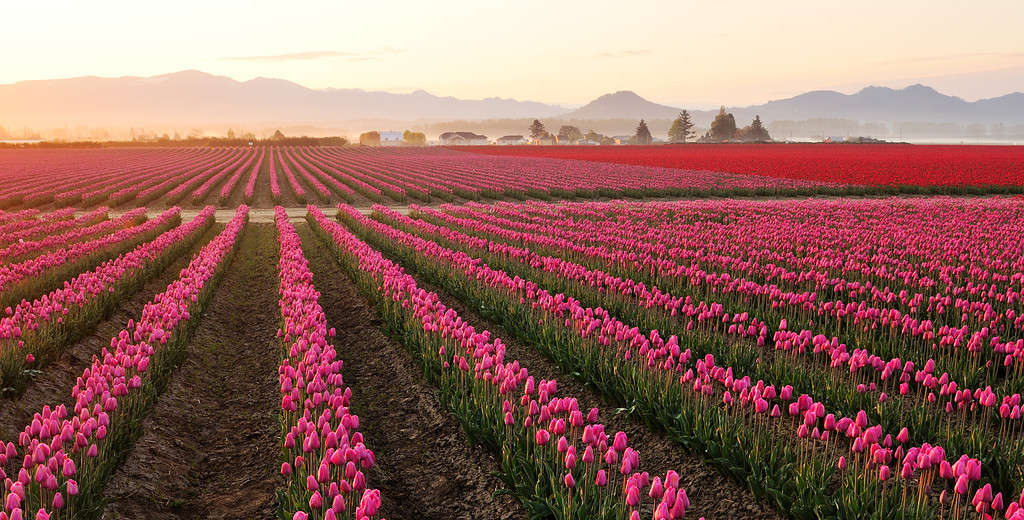
The tulip was cultivated as early as the year 1,000 AD.
©Lijuan Guo/iStock via Getty Images
Across the globe, no one can grow tulips quite like the Netherlands. This country exports over three billion tulip bulbs annually.
3. The Tulip Is the National Flower of the Netherlands

The tulip is also the national flower of Turkey and Afghanistan.
©Nick N A/Shutterstock.com
In addition to being the world’s largest tulip producer, people within the Netherlands are also passionate about this flower themselves. In fact, this country hosts an annual Tulip Festival each year in spring.
4. Certain Parts of Tulips Are Edible

During times of famine, tulip bulbs were eaten.
©Mariia Boiko/Shutterstock.com
Believe it or not, certain parts of these flowers are edible, such as the petals. However, stay away from the bulbs as preparing them improperly can have negative side effects such as nausea, diarrhea, and vomiting.
5. Tulips Are Medicinal
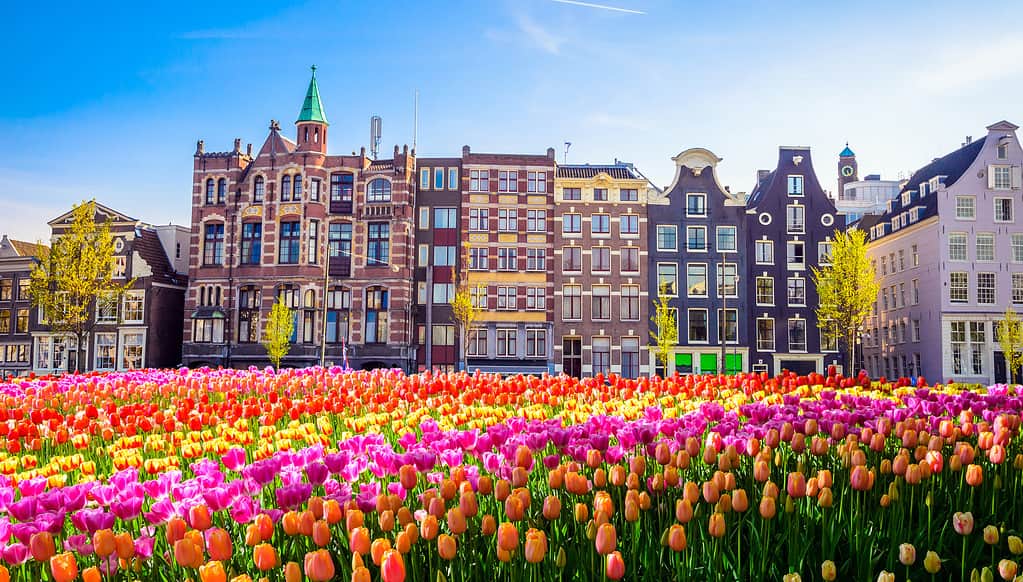
Tulips thrive in full-sun areas.
©Olena_Z/iStock via Getty Images
Believe it or not, tulips are also medicinally helpful. According to Forest Farm Peace Garden, “Tulip flowers have been used as a poultice for insect bites, bee stings and have provided relief from scratches, itches and skin irritations, although some report an allergic reaction to it. Tulip sap also has diuretic and antiseptic properties and has been used to treat coughs and colds.”
6. Tulips Symbolize Rebirth

Tulips make a lovely addition to any bouquet.
©dreakrawi/Shutterstock.com
While many people believe that tulips are symbolic of romantic love, others feel that these flowers are representative of new beginnings, transition into a new phase of life, and rebirth.
7. Tulips Help Boost Mental Health

Many people enjoy adding tulips to their gardens as they are easy to care for.
©Craig Sterken/Shutterstock.com
The Yellow Tulip Project is an organization that’s on a mission to destigmatize mental health and help prevent suicide.
8. Tulips Have a Short Bloom Time

If your pet has accidentally ingested tulips, contact your vet immediately.
©OlgaOvcharenko/Shutterstock.com
Although these flowers are beautiful, they are ephemeral. Tulips typically only bloom for about two weeks at maximum.
9. Tulips Were Once Incredibly Expensive

The time in which tulip prices rose to unbelievable highs was known as “tulip mania.”
©Lizzy Komen/Shutterstock.com
In the modern day, these flowers are very affordable and nearly anyone who wants to plant them is able to do so. However, in the 1600s, a single tulip bulb could cost as much as ten times someone’s yearly salary.
10. Tulips Grow Towards the Light
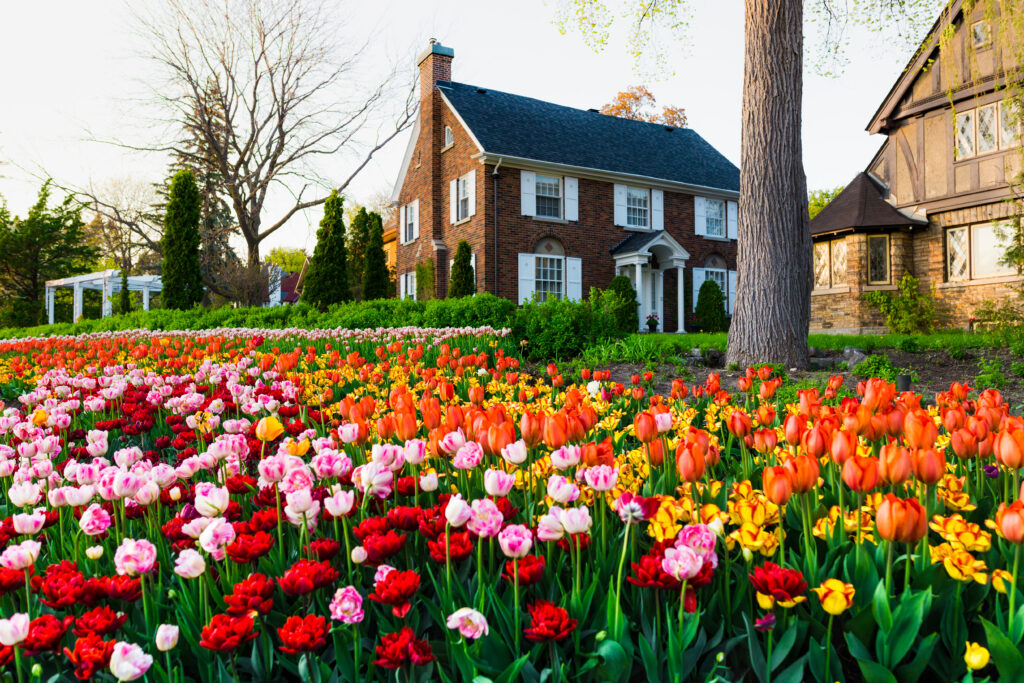
Tulip is an uncommon girl’s name.
©Facto Photo/Shutterstock.com
If you place a vase of tulips next to a window, you may notice that the flowers on the opposite side of the light will begin to wilt.
11. Tulips Are a Member of the Lily Family
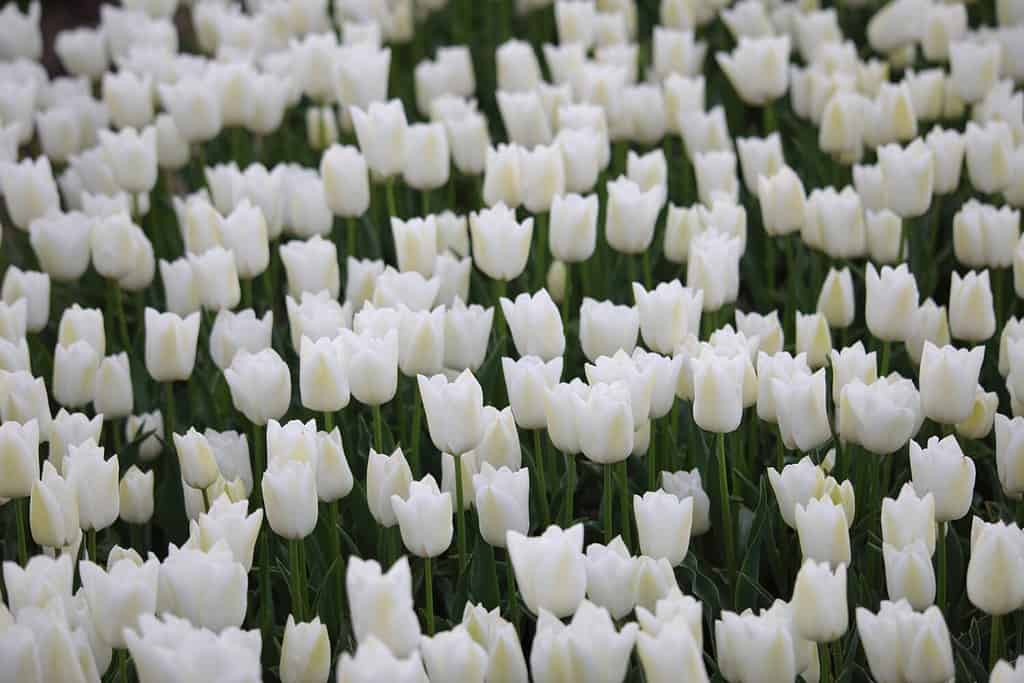
White tulips are associated with forgiveness, innocence, and purity.
©Ole Schoener/Shutterstock.com
Tulips belong to the family Liliaceae, which also includes a variety of lilies such as the trout lily, yellow star-of-Bethlehem, and mission bells.
12. The Best Time to Plant Tulip Bulbs Is During the Colder Months

It is much easier to grow tulips outdoors than it is indoors.
©RN Photo Midwest/Shutterstock.com
Although many gardeners may think early spring is the best time for planting, tulip bulbs need to be chilled for roughly six to 12 weeks. Because of this, planting in late fall or early winter is preferable.
13. Tulips Have Many Companion Plants

The Canadian Tulip Festival is the largest in the world.
©Nahhana/Shutterstock.com
Although opinions differ from gardener to gardener, it is generally accepted that lilies, coneflowers, and brunnera are perfect companion plants for tulips.
14. Tulips Are Easy to Care For
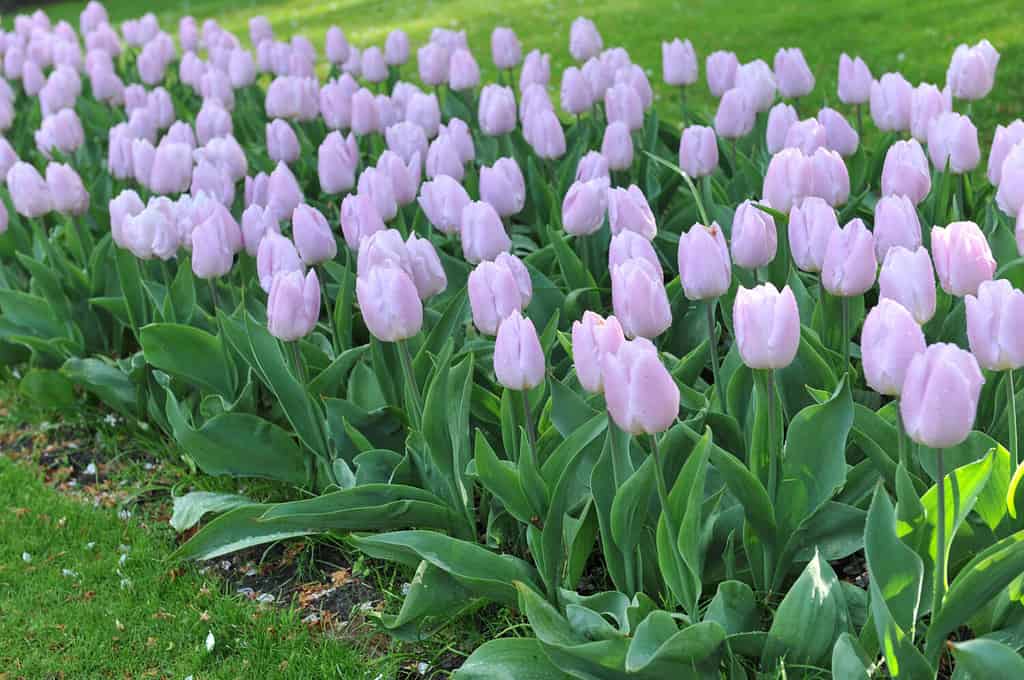
Tulips don’t require daily watering.
©Sergey V Kalyakin/Shutterstock.com
Compared to other flowers, tulips are relatively low maintenance and don’t require much effort to maintain. Plant them in a sunny area and water them every so often and they’ll bloom beautifully.
15. Tulips Are Symbolic of the Parkinson’s Community
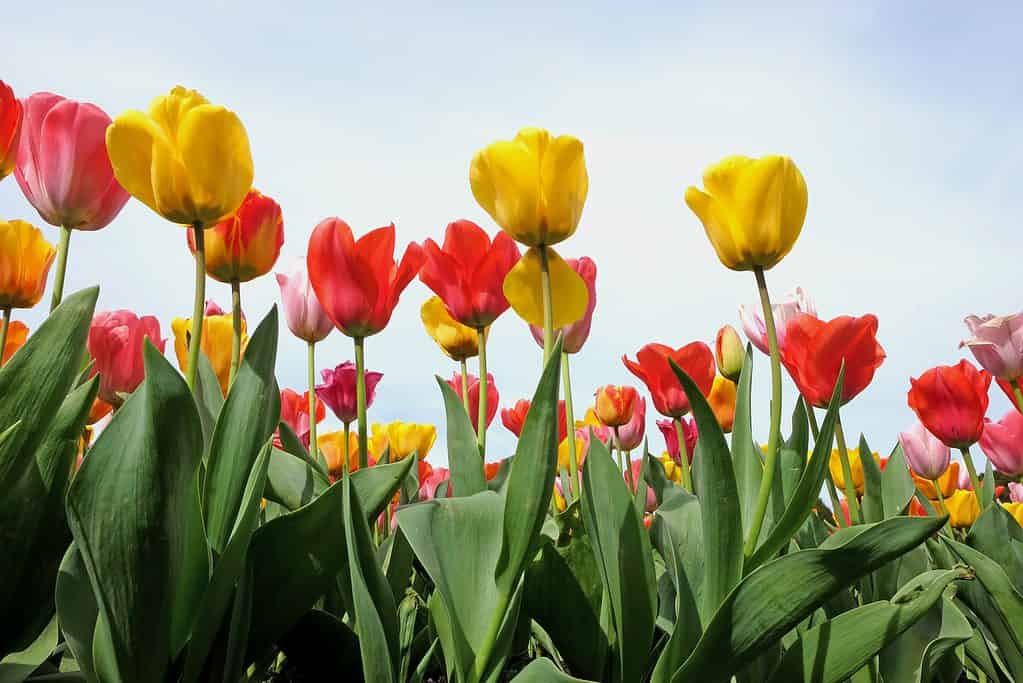
The word “tulip,” translates to “turban,” in Turkish.
©Alex Manders/Shutterstock.com
According to Parkinson’s Western Australia, this association was created because “a Dutch horticulturist JWS Van der Wereld, who had Parkinson’s, developed a red and white variant of the tulip. He named this the Dr. James Parkinson’s tulip in honor of the English General Practitioner who first wrote about the condition in his 1817 publication, ‘The Essay of The Shaking Palsy’.”
16. Tulips Are Native to Central Asia

Tulips were brought over the Europe during the 16th century.
©Hosi Zin/Shutterstock.com
Although countries in Europe can’t get enough of these colorful flowers, they actually originated in ancient Kazakhstan.
17. There Are Roughly 3000 Different Tulip Varieties

Fringed tulips, angelique tulips, parrot tulips, and triumph tulips are quite popular.
©Sergey V Kalyakin/Shutterstock.com
Luckily, because there are so many different types of these flowers, even the pickiest gardeners are sure to find the perfect tulip for them.
18. Angelique Tulips Are the Most Popular of All
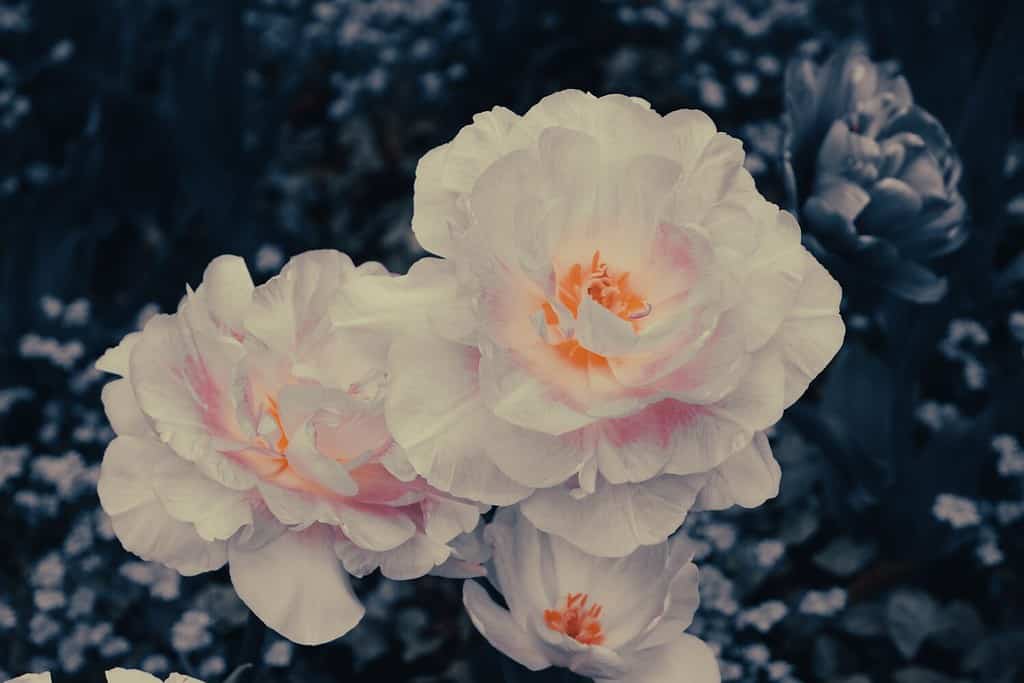
10 Angelique tulip bulbs cost roughly $10.
©Fire-n/Shutterstock.com
Although there are many different tulips in the world, one stands out among the rest. Angelique tulips are hands down the most popular, in fact, some people call them “America’s favorite tulip.”
19. Even if You Cut Tulip Stems, They’ll Still Continue to Grow
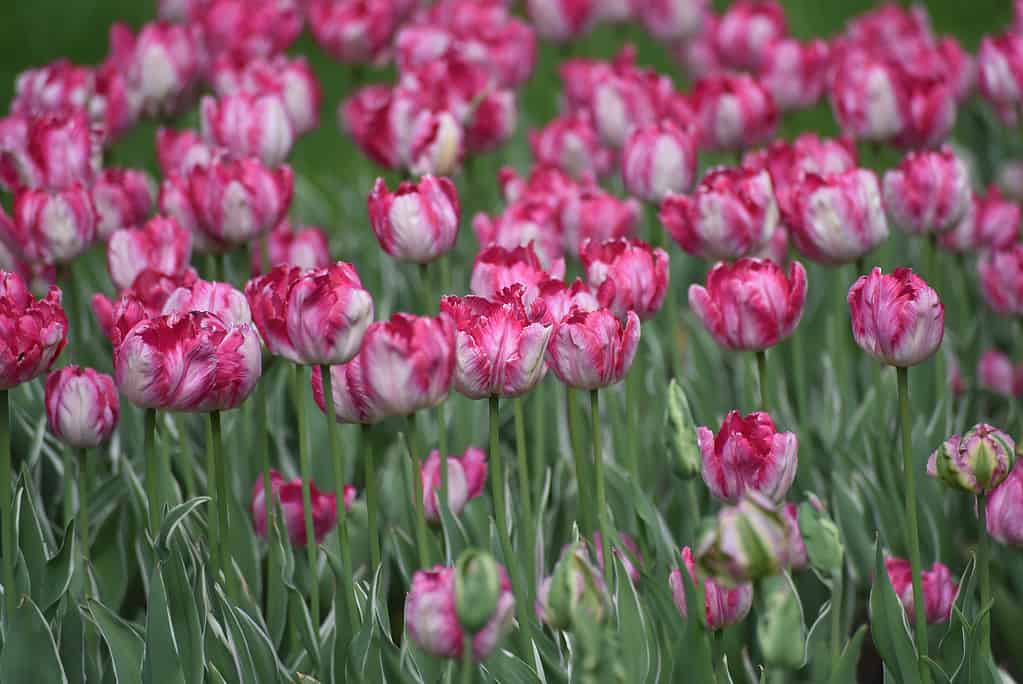
Tulips belong to the genus
Tulipa.
©nshilov/Shutterstock.com
While most flowers will stop growing after their stems are cut, tulips can grow up to 6 more inches in length if left in a vase of water.
20. Tulips Are Symmetrical

The first tulips were discovered sometime during the tenth century.
©SametGuler/Shutterstock.com
Tulips have a very symmetrical design. It’s not quite perfect, but it’s really as close as you can get when it comes to flowers!
The photo featured at the top of this post is © dreakrawi/Shutterstock.com
Thank you for reading! Have some feedback for us? Contact the AZ Animals editorial team.







